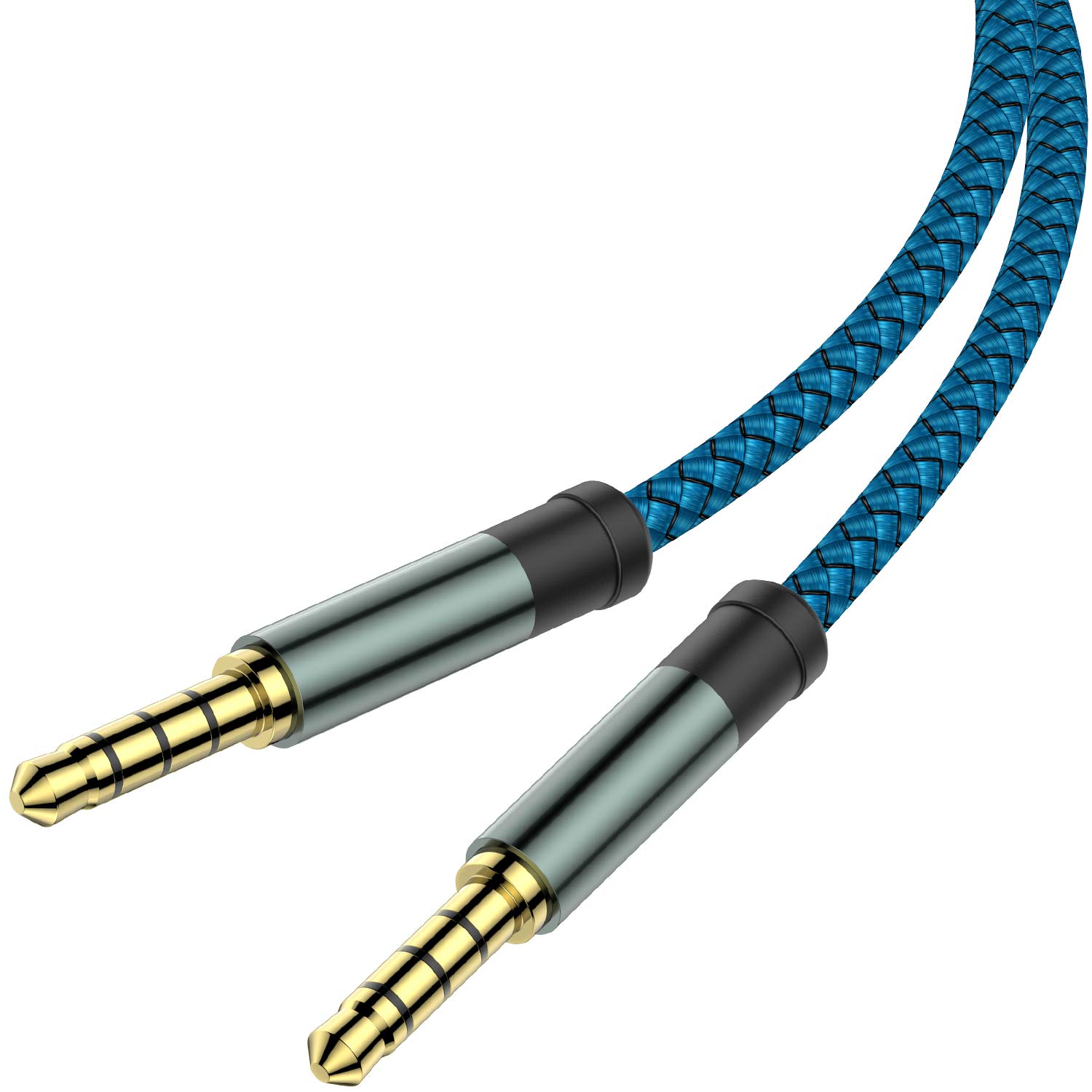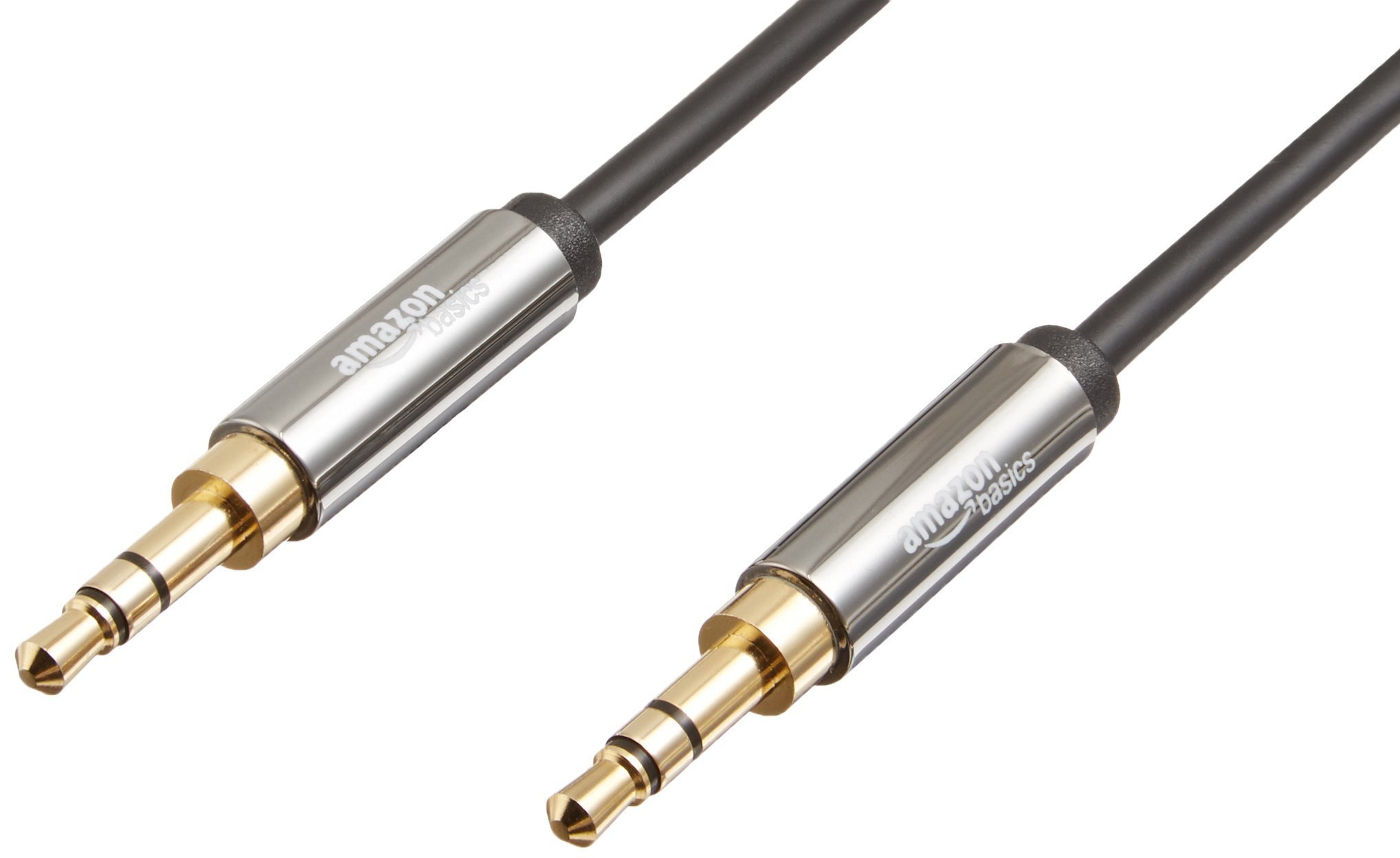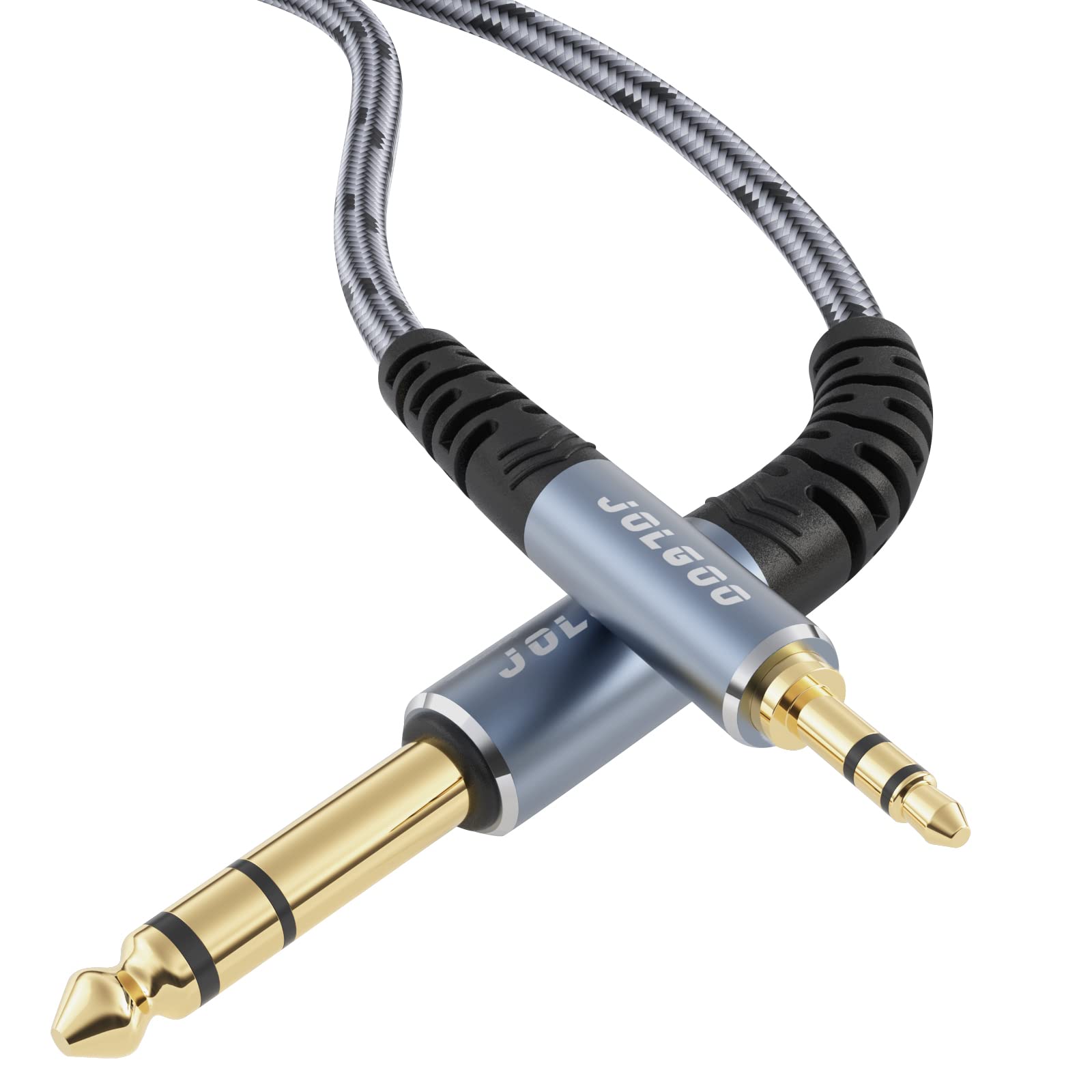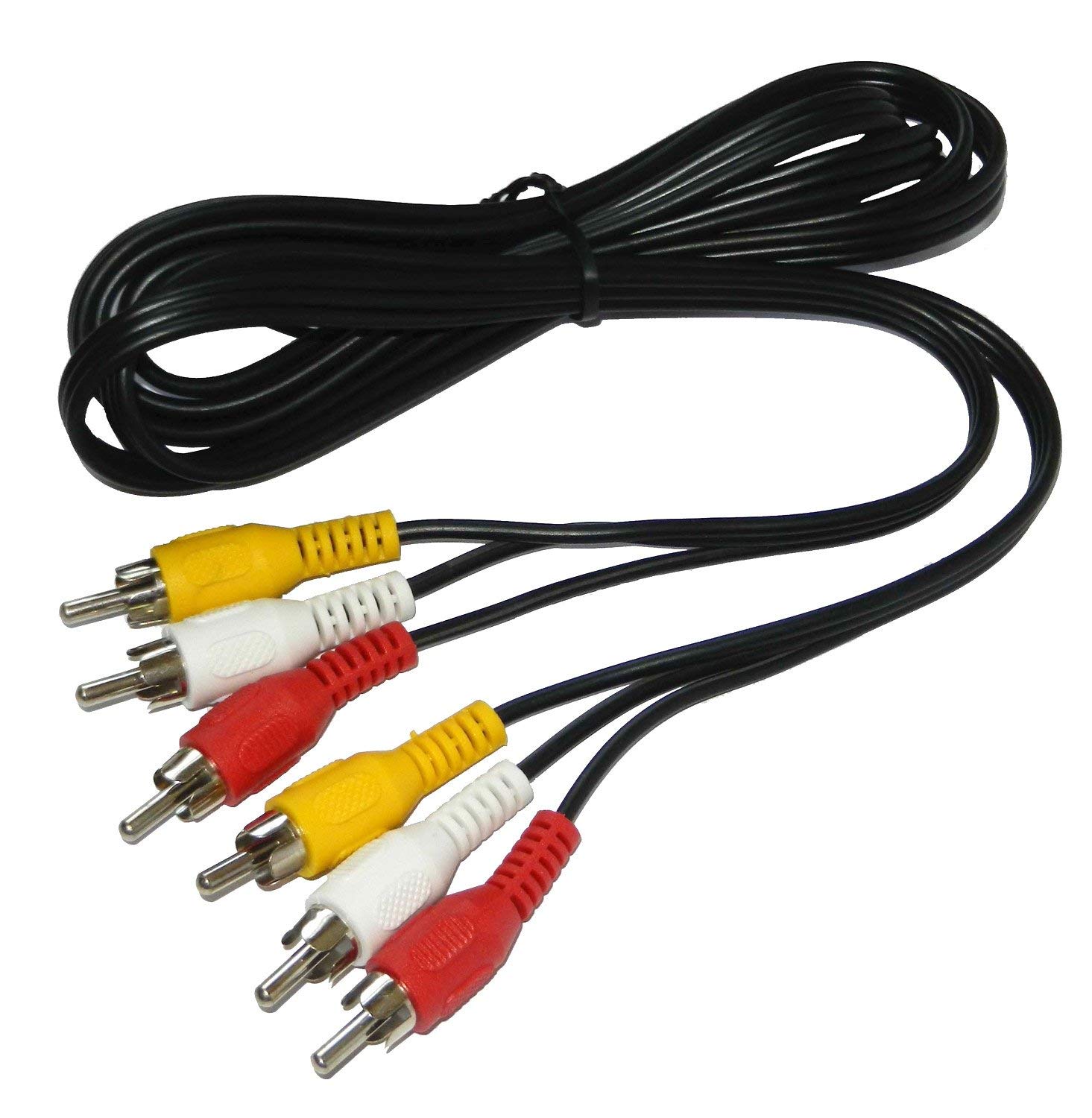Home>Production & Technology>Audio Cable>What Is 4-Pole Audio Cable Used For?


Audio Cable
What Is 4-Pole Audio Cable Used For?
Published: December 20, 2023
Learn about the versatility of 4-pole audio cables and their wide range of uses in transmitting audio signals. Find out how these cables are essential for connecting various audio devices.
(Many of the links in this article redirect to a specific reviewed product. Your purchase of these products through affiliate links helps to generate commission for AudioLover.com, at no extra cost. Learn more)
Table of Contents
Introduction
In today’s technologically advanced world, audio cables play a crucial role in connecting various devices and ensuring high-quality sound transmission. One type of audio cable that has gained popularity in recent years is the 4-pole audio cable. This versatile cable is used in a wide range of applications, from professional audio setups to consumer electronics.
A 4-pole audio cable, also known as a TRRS (Tip-Ring-Ring-Sleeve) cable, is designed to carry both audio signals and additional data. It is distinguished by its four distinct sections, each serving a unique purpose. The tip and first ring carry the left and right audio channels, while the second ring carries the microphone signal. The sleeve serves as the ground connection.
The 4-pole audio cable is widely utilized in the world of mobile devices. With the increasing popularity of smartphones and tablets, this cable has become a standard for connecting headphones, earphones, and headsets to these devices. Additionally, it is also used with certain gaming consoles, laptops, and desktop computers that support audio and microphone functionality through a single port.
In this article, we will delve into the concept of 4-pole audio cables, explore their common uses, discuss device compatibility, and highlight their advantages and disadvantages. Whether you are a music enthusiast, a gamer, or simply someone looking to better understand audio connectivity options, this article will provide you with valuable insights into the world of 4-pole audio cables.
Definition of 4-Pole Audio Cable
A 4-pole audio cable, also known as a TRRS (Tip-Ring-Ring-Sleeve) cable, is a type of audio cable that is designed to carry both audio signals and additional data. It is called “4-pole” because it consists of four distinct sections or segments, each serving a specific purpose. These sections are the tip, the first ring, the second ring, and the sleeve.
The tip of the 4-pole audio cable carries the left audio channel, while the first ring carries the right audio channel. This allows for stereo audio playback when using headphones or speakers. The second ring carries the microphone signal, enabling the connection and use of a microphone with devices that support audio input.
The sleeve of the cable serves as the ground connection, providing a reference point for the audio signals and ensuring a stable and interference-free transmission. Without a proper ground connection, audio quality can suffer from unwanted noise and distortion.
The 4-pole audio cable is typically used in conjunction with devices that have a single combined audio and microphone jack, commonly found on smartphones, tablets, laptops, and gaming consoles. This single jack allows for the seamless connection of headphones or headsets that have both audio and microphone capabilities.
It’s important to note that not all audio cables are 4-pole cables. The traditional 3-pole audio cables, also known as TRS (Tip-Ring-Sleeve) cables, only have three segments and are used primarily for stereo audio connections without microphone support.
Overall, the 4-pole audio cable provides a convenient solution for connecting audio devices with the added benefit of microphone functionality. It has become a standard in the world of mobile devices and is widely used in both professional and consumer applications.
Common Uses of 4-Pole Audio Cable
The 4-pole audio cable has become widely popular due to its versatility and compatibility with various devices. Let’s explore some of the common uses of this cable:
1. Mobile Devices: One of the most common uses of the 4-pole audio cable is to connect headphones, earphones, and headsets to mobile devices such as smartphones and tablets. With a single 4-pole audio jack, users can enjoy stereo audio playback and microphone functionality on the go.
2. Gaming Consoles: Many gaming consoles, such as PlayStation and Xbox, feature a single combined audio and microphone jack. This makes the 4-pole audio cable ideal for connecting gaming headsets that provide immersive audio and facilitate voice chat during online gaming sessions.
3. Laptops and Computers: Some laptops and desktop computers also come with a single audio jack that supports both audio output and microphone input. The 4-pole audio cable allows users to connect headphones or headsets without the need for separate audio and microphone jacks.
4. Audio Interfaces: In professional audio setups, the 4-pole audio cable is used to connect microphones, instruments, and other audio equipment to audio interfaces. This enables recording and playback of high-quality audio signals with the convenience of a single cable connection.
5. Communication Headsets: Various industries rely on communication headsets that utilize the 4-pole audio cable for audio and microphone transmission. These headsets are widely used in call centers, customer service centers, and other environments where clear communication is essential.
6. Portable Media Players: Some portable media players, such as MP3 players and digital audio recorders, feature a 4-pole audio jack. This allows users to connect headphones or earphones with microphone support to enjoy their favorite music or record audio in a hands-free manner.
It’s important to ensure that the devices being connected are compatible with the 4-pole audio cable. While most modern devices support this type of cable, it’s always a good idea to check the specifications and user manuals for compatibility information.
The 4-pole audio cable offers convenience and versatility, making it an essential accessory for a wide range of audio-related applications. Whether you’re a music lover, a gamer, or a professional in the audio industry, the 4-pole audio cable provides a seamless and efficient way to connect your devices and enjoy high-quality audio performance.
+
Compatibility with Devices
The 4-pole audio cable is designed to be compatible with a wide range of devices that support audio output and microphone input through a single combined port. Let’s explore the compatibility of this cable with various devices:
1. Smartphones and Tablets: Most modern smartphones and tablets feature a 3.5mm audio jack that supports the use of 4-pole audio cables. This allows users to connect headphones or headsets with microphone capabilities for listening to music, making phone calls, and participating in video conferences.
2. Laptops and Computers: Many laptops and computers now come equipped with a 4-pole audio jack, often referred to as a headphone/microphone combo jack. This makes it easy to connect headphones or headsets for audio playback and microphone use without the need for additional adapters or cables.
3. Gaming Consoles: Gaming consoles such as PlayStation, Xbox, and Nintendo Switch are compatible with 4-pole audio cables. These cables can be used to connect gaming headsets, allowing users to enjoy immersive audio and communicate with other players during online gaming sessions.
4. Audio Interfaces: Professional audio interfaces, used in recording studios and live sound setups, often have designated inputs for microphones and instruments that accept 4-pole audio cables. This makes it convenient to connect microphones and other audio equipment to achieve high-quality audio recording and playback.
5. Communication Systems: Many communication systems, such as call center solutions and video conferencing platforms, are designed to work with 4-pole audio cables. These cables enable clear audio transmission and facilitate effective communication in various professional environments.
It’s worth noting that while most devices support 4-pole audio cables, there may be exceptions. Some older devices or niche products may have different audio port configurations or require separate jacks for audio and microphone connections. In such cases, adapters or specialized cables may be necessary to achieve compatibility.
In addition to device compatibility, it’s important to consider the compatibility of the 4-pole audio cable with specific audio accessories. It’s recommended to choose headphones, headsets, or other audio equipment that explicitly mention support for 4-pole connections to ensure seamless compatibility and optimal performance.
Overall, the 4-pole audio cable offers broad compatibility with a vast array of devices that share a common audio and microphone port. This makes it a versatile and convenient choice for connecting audio equipment and accessories in various settings, from personal use to professional audio applications.
Advantages and Disadvantages
Like any audio cable, the 4-pole audio cable has its own set of advantages and disadvantages. Let’s take a closer look at what makes this cable beneficial and where it may have some limitations:
Advantages:
1. Convenience: The 4-pole audio cable allows for the seamless connection of headphones, headsets, and other audio devices with both audio playback and microphone functionality. It eliminates the need for separate cables or adapters, providing a convenient and clutter-free experience.
2. Versatility: With its broad compatibility, the 4-pole audio cable can be used with various devices, including smartphones, tablets, gaming consoles, laptops, and audio interfaces. This versatility makes it a versatile and practical choice for a wide range of applications.
3. Single Connection: By combining audio and microphone signals into a single cable, the 4-pole audio cable simplifies the connection process. It reduces the number of cables to manage and minimizes the risk of tangling or damage during use.
4. Improved Audio Quality: The design of 4-pole audio cables takes into account factors like ground connection and shielding, which contribute to better audio quality. This translates to cleaner and more accurate sound reproduction, enhancing the overall listening experience.
Disadvantages:
1. Limited to Single Port Devices: The main limitation of the 4-pole audio cable is its compatibility with devices that have a single combined audio and microphone port. Devices that feature separate audio and microphone jacks may require additional adapters or cables to connect with 4-pole audio accessories.
2. Limited Length: Like other cable types, the length of the 4-pole audio cable can impact signal quality. Longer cables may lead to signal degradation and loss, affecting audio quality. It is important to choose the appropriate cable length for the intended application to ensure optimal performance.
3. Fragility: As with any cable, 4-pole audio cables are susceptible to wear and tear over time. Constant bending, twisting, or pulling can lead to internal wire damage or connector malfunction. It is important to handle and store the cable properly to prevent premature damage.
4. Limited to TRRS Connectivity: The 4-pole audio cable is specifically designed for TRRS connections, which means it may not be compatible with devices that require different audio connection configurations. In such cases, alternative cable types or adaptors may be necessary to establish the connection.
Despite these limitations, the advantages of the 4-pole audio cable outweigh the disadvantages for most users. Its convenience, versatility, and improved audio quality make it an ideal choice for connecting headphones, headsets, and audio devices that support 4-pole connectivity.
It’s worth noting that the quality and performance of the 4-pole audio cable can vary between different brands and manufacturers. Choosing cables from reputable brands and ensuring proper handling and storage can increase their longevity and overall reliability.
Conclusion
The 4-pole audio cable, also known as the TRRS cable, has become increasingly important in today’s world of audio connectivity. With its ability to carry audio signals and additional data, this cable offers a convenient and versatile solution for various applications.
One of the key advantages of the 4-pole audio cable is its compatibility with devices that feature a single combined audio and microphone port. This includes smartphones, tablets, gaming consoles, laptops, and audio interfaces. It allows for the seamless connection of headphones, headsets, and other audio accessories with ease.
The convenience of a single cable connection eliminates the need for separate audio and microphone cables, reducing cable clutter and simplifying the setup process. Additionally, the 4-pole audio cable provides improved audio quality with its attention to factors like ground connection and shielding, ensuring cleaner and accurate sound reproduction.
However, it’s important to consider the limitations of the 4-pole audio cable. It is specifically designed for devices with TRRS connectivity, which means it may not be compatible with devices that require different audio connection configurations. Additionally, the cable length and fragility should be taken into account to ensure proper functioning and longevity.
In conclusion, the 4-pole audio cable offers a convenient and versatile solution for connecting audio devices with both audio and microphone capabilities. Whether you’re a music lover, a gamer, or a professional in the audio industry, this cable provides a seamless and efficient way to enhance your audio experience. It is widely supported by modern devices and is an essential accessory for a variety of applications.
When choosing a 4-pole audio cable, it is recommended to opt for cables from reputable brands and ensure proper handling and storage. This will help ensure optimal performance and longevity of the cable.
Overall, the 4-pole audio cable is a valuable tool in the world of audio connectivity, providing an efficient and effective means of enjoying high-quality sound and seamless communication.











